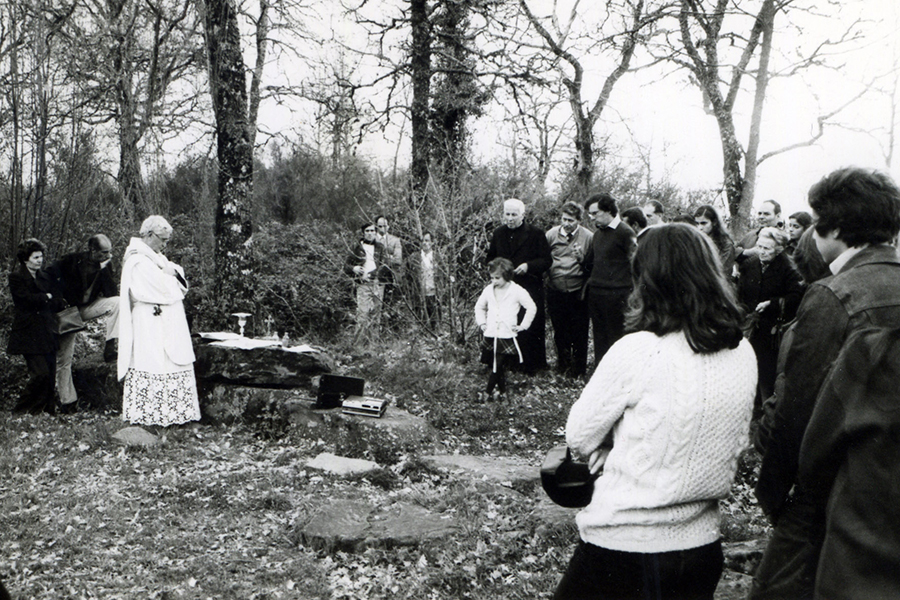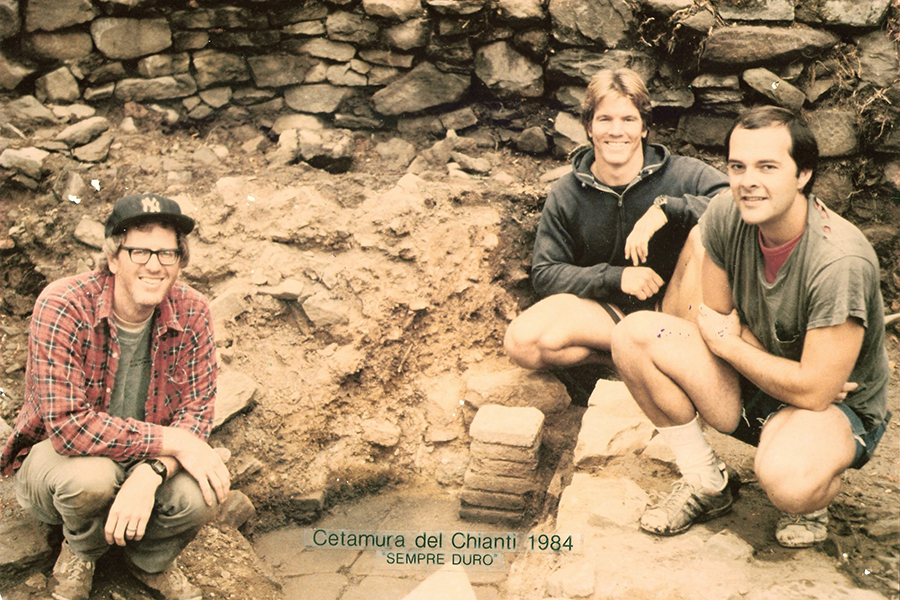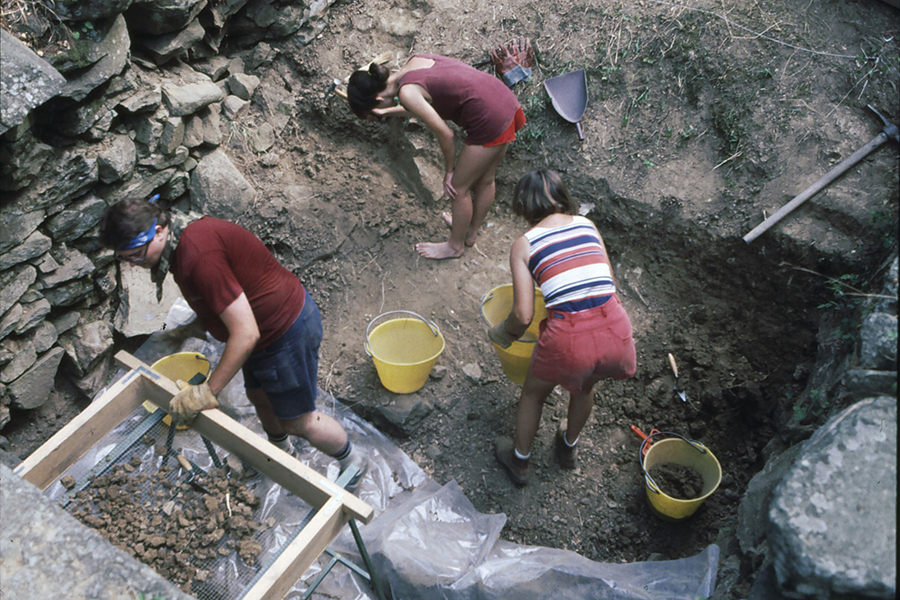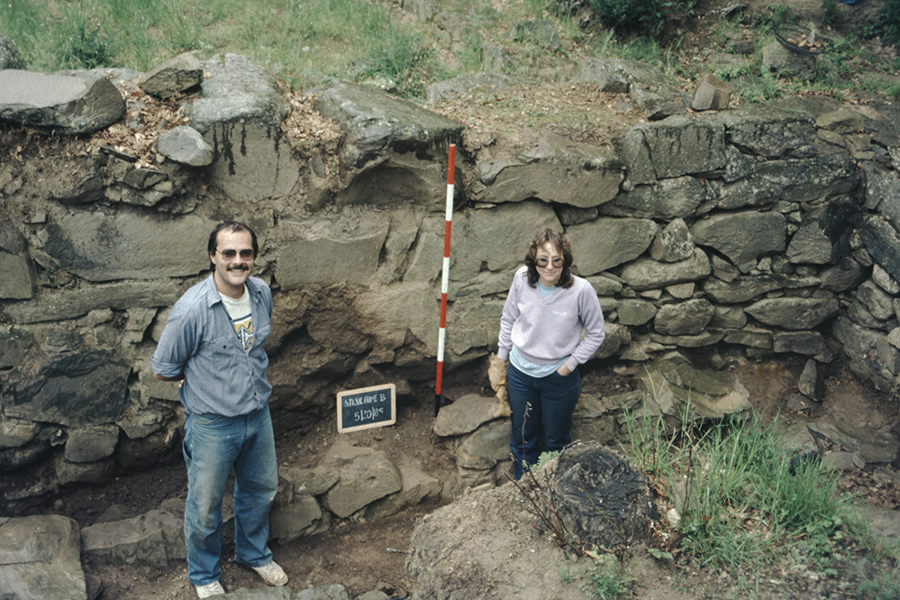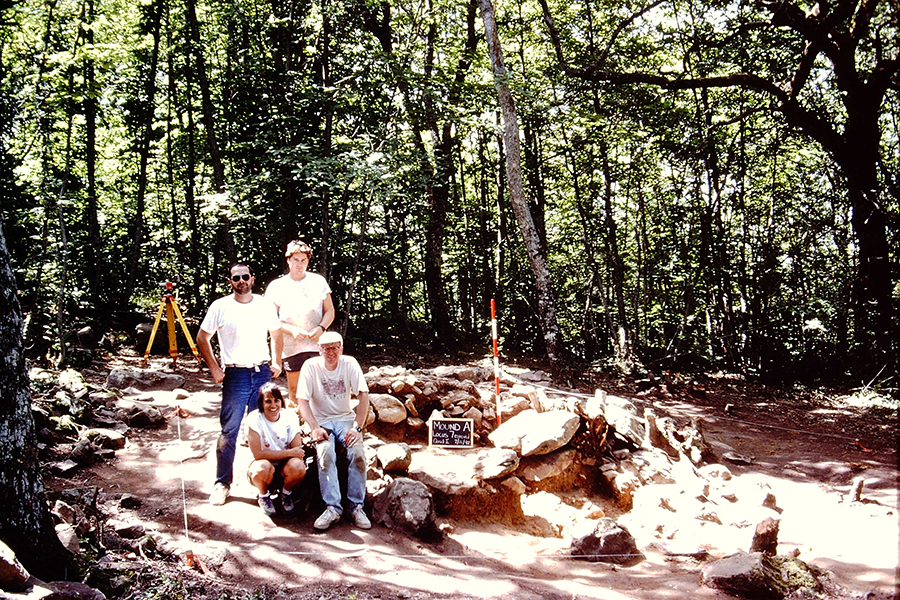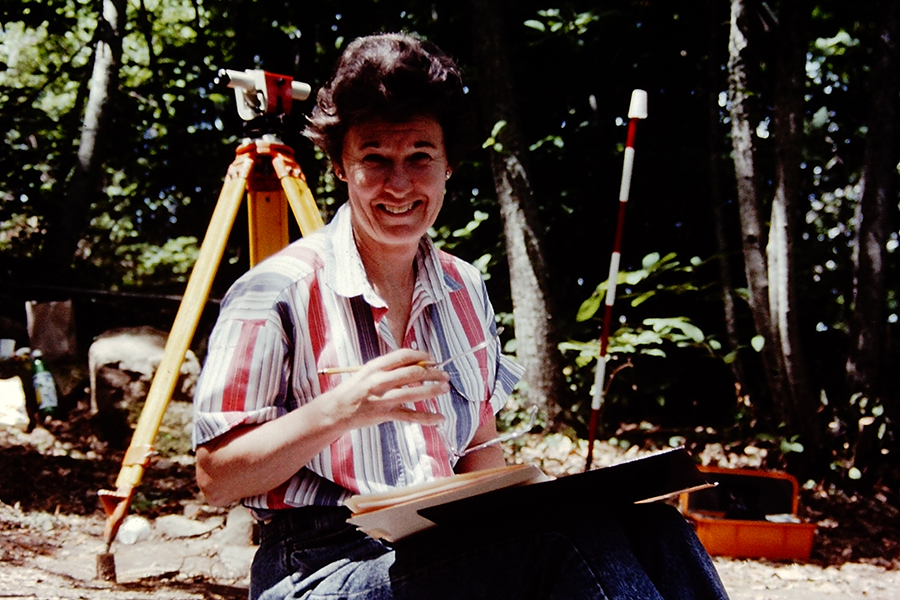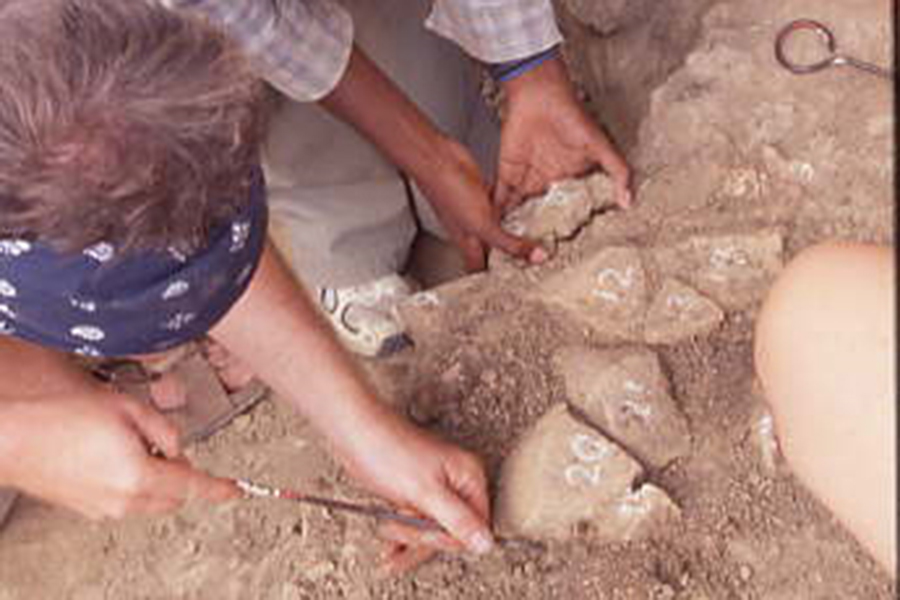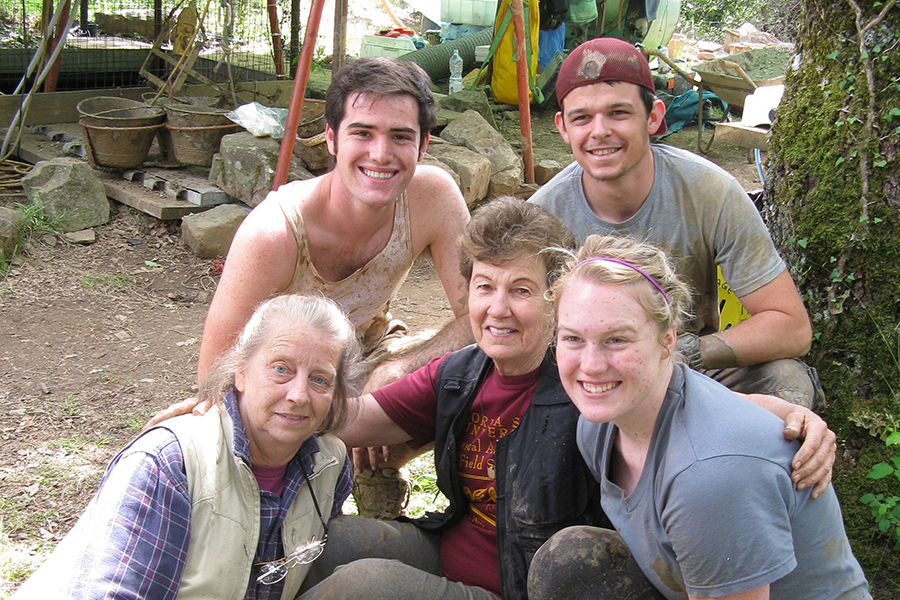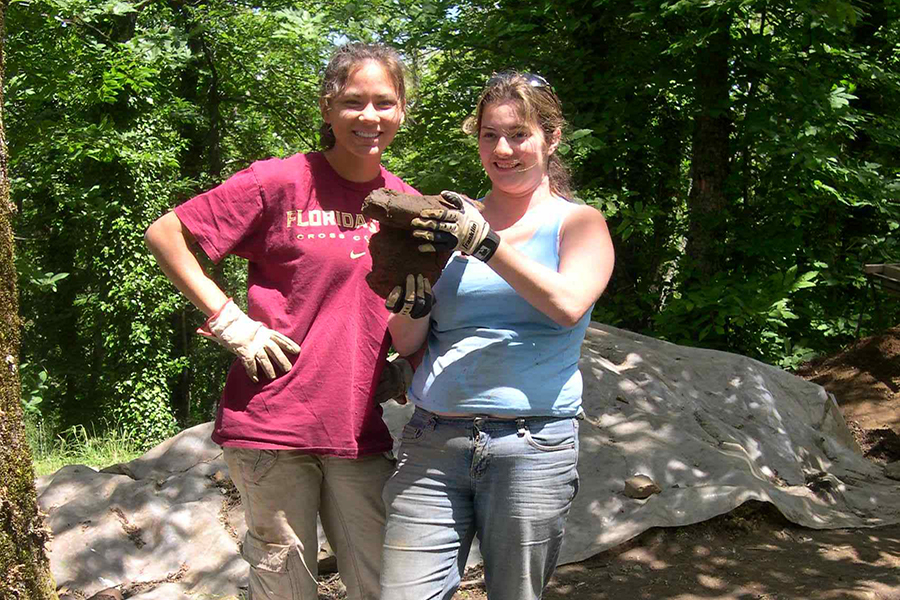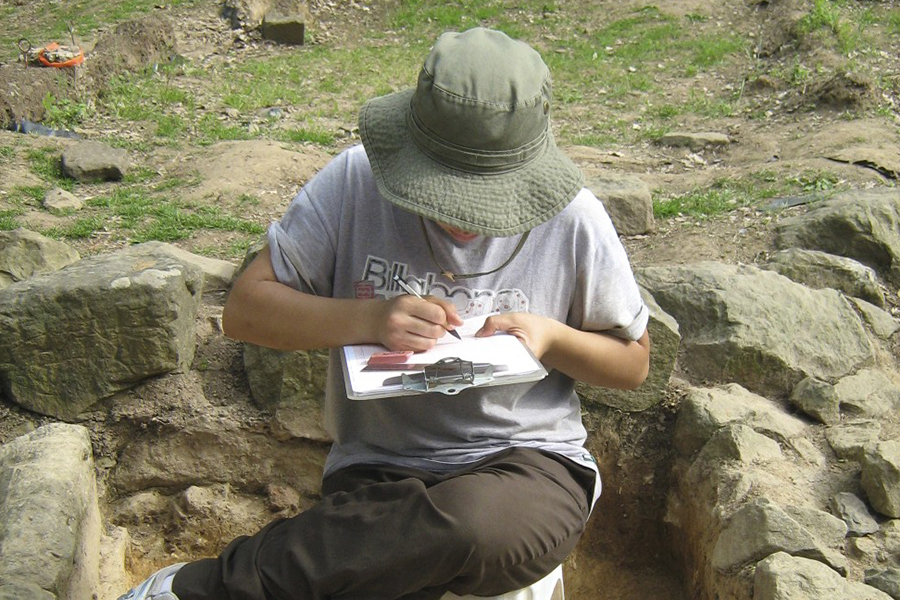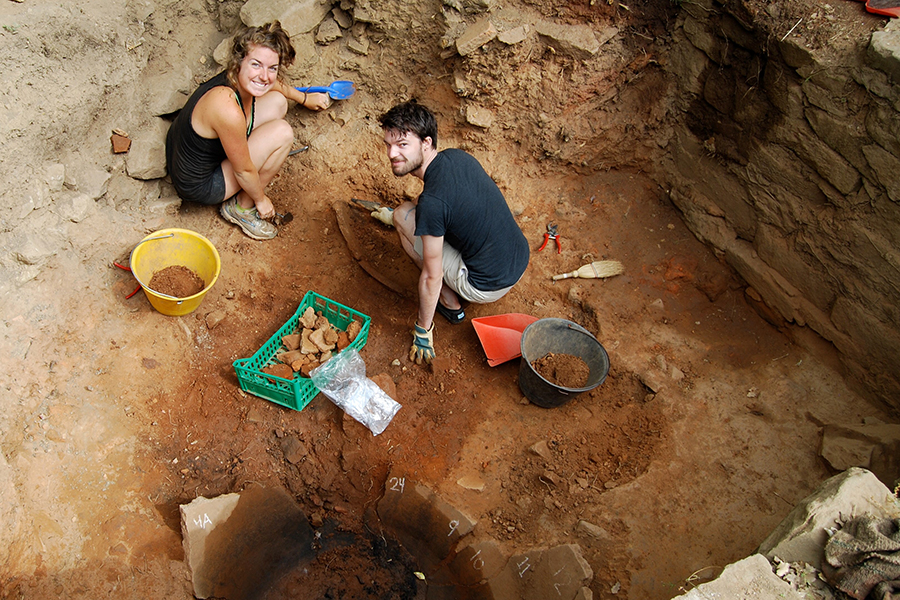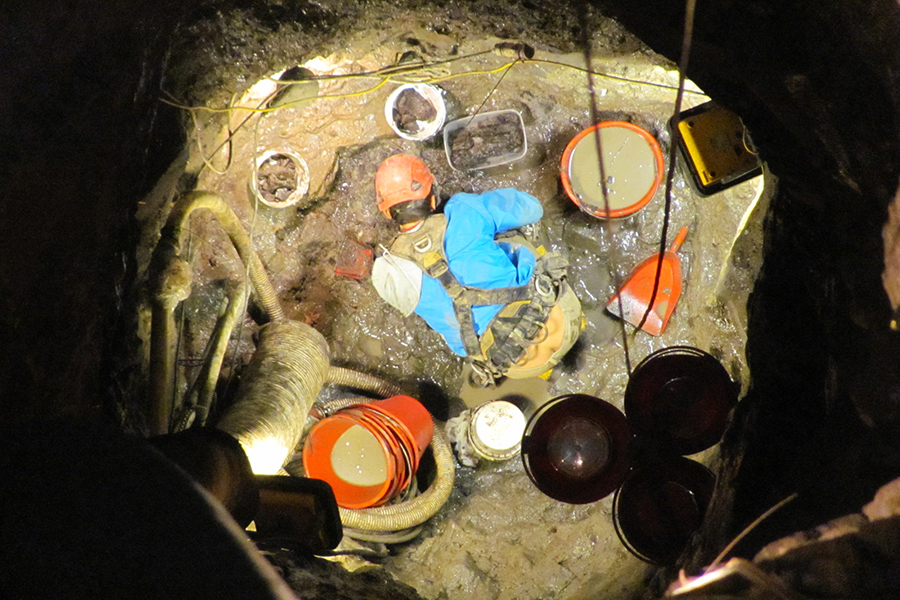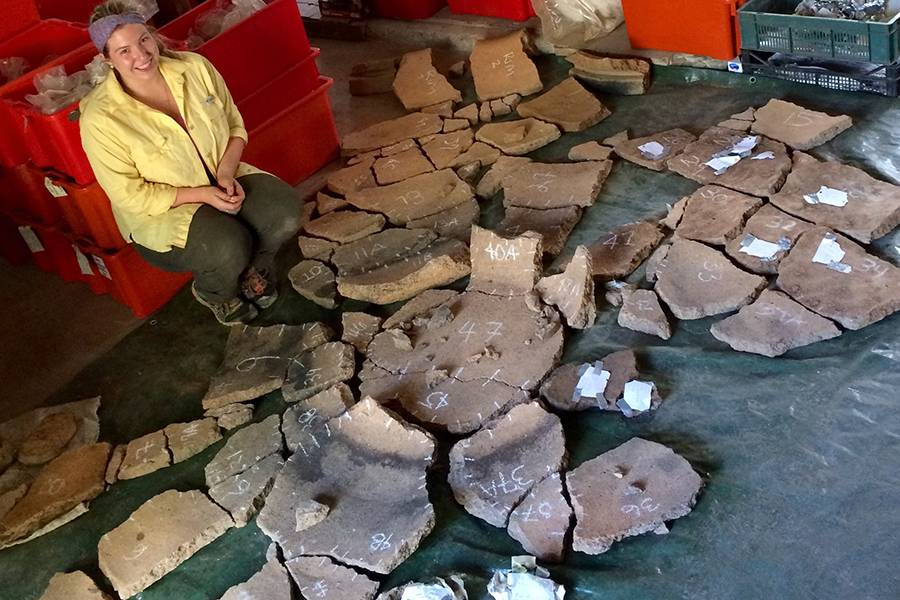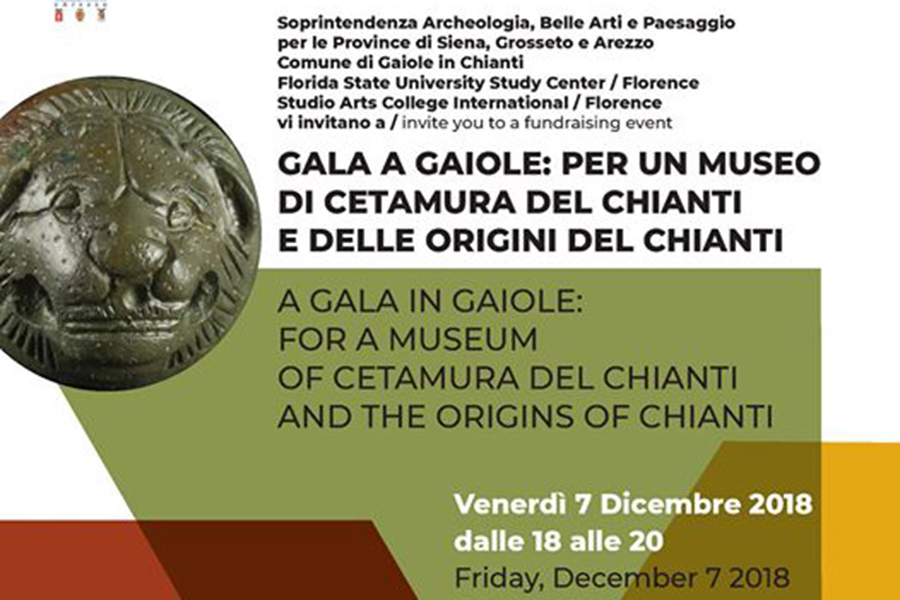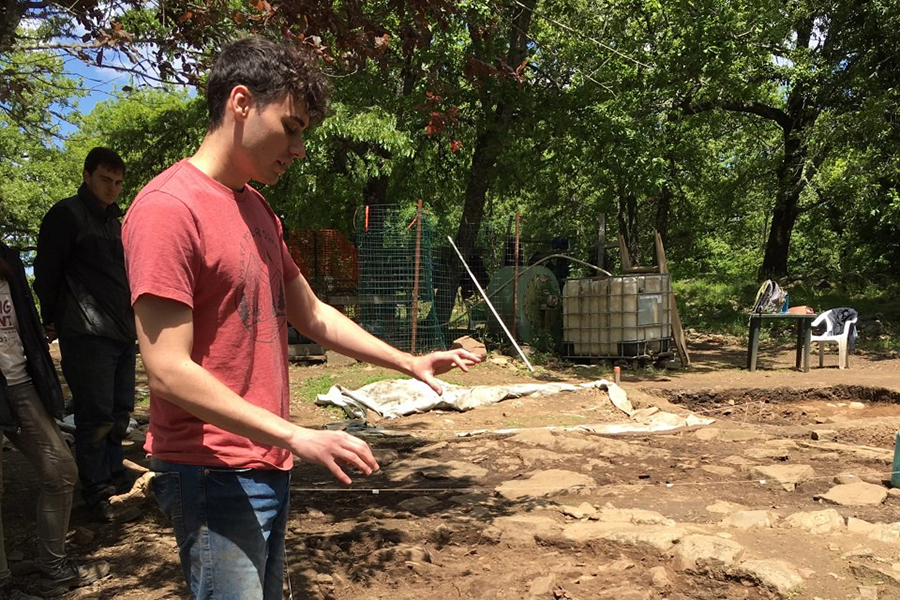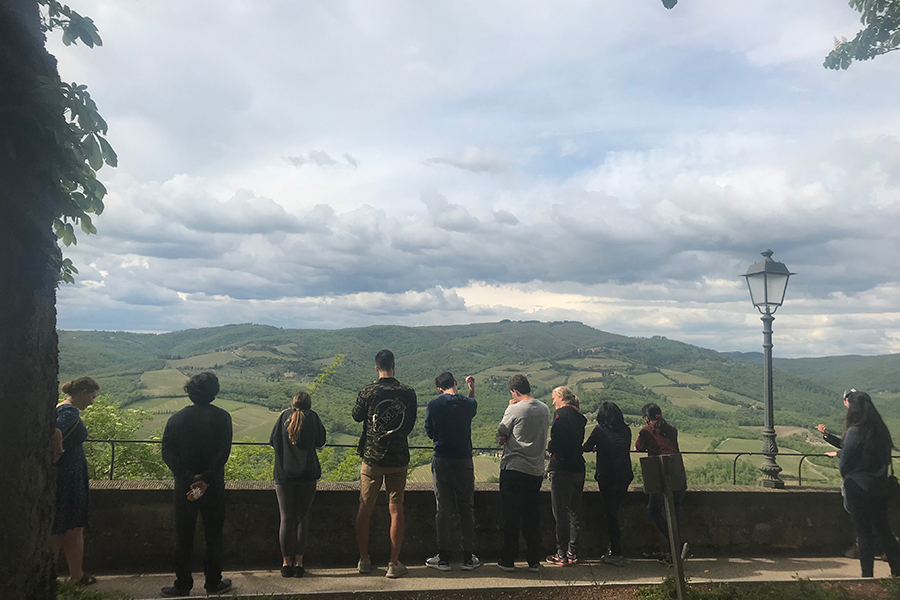Uncovering Italy
Celebrating 50 years of archaeological excavations by FSU students in Cetamura del Chianti
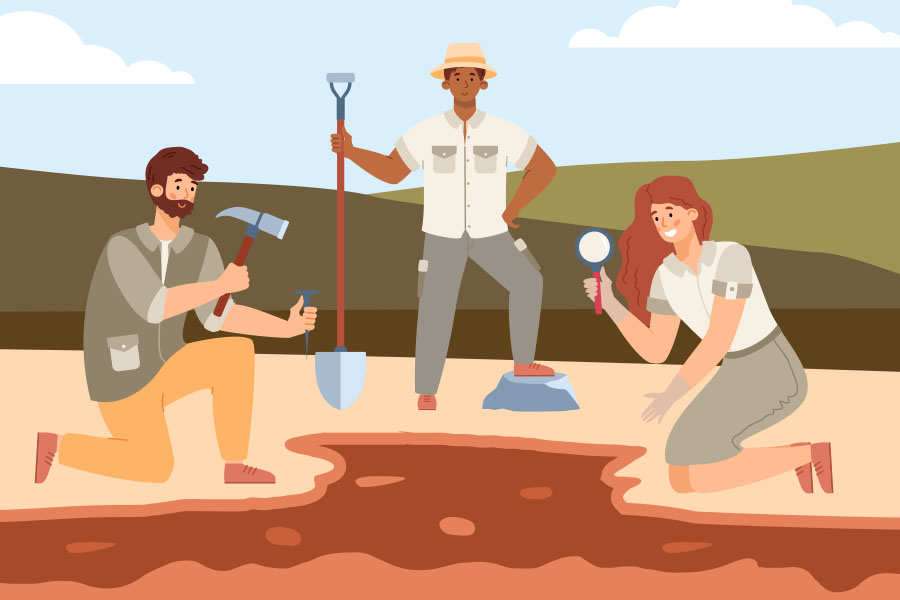
As Florida State University alumnus Gregg Anderson dug into the rich soil of the Italian region of Tuscany in 1979, he had a vision that one day, artifacts he and his fellow student archaeologists uncovered would be illuminated under museum lights. That dream is coming to fruition this year with the establishment of the new Civic Museum at the Origins of Chianti in Gaiole, Italy, which will feature spectacular archaeological discoveries from 50 years of excavations at Cetamura.
FSU’s Department of Classics first began archaeological excavation and research at Cetamura — which since the 7th century B.C.E. was home to Etruscans and later Romans, and Italians of the Middle Ages — in 1973 as coursework at the FSU Study Center in Florence. Organizers will celebrate the 50th anniversary of the dig in June 2023 alongside the inauguration of the new museum.
“It’s incredible to share the thrill of finding something that belonged to someone thousands of years ago with students and watching them figure out what it means to us today or how what they found changes what we know about the past,” said Nancy de Grummond, M. Lynette Thompson Professor of Classics and director of excavations for Cetamura, Archaeology in Tuscany for the past 40 years.
The Cetamura program, supported by FSU International Programs and the FSU Study Center in Florence, has provided hundreds of students with exclusive opportunities to participate in excavation, preservation work and the construction of exhibitions.
“In 1979, Cetamura had just switched from a class to a program, and I jumped at the opportunity,” said Anderson, who at the time had just started studying in the graduate program in industrial design and development and now serves as the chair of the 50th Anniversary Committee. “We lived in an elementary school in the little town of Gaiole and would bus out to the dig site to begin excavating by 7 a.m. At that time in the ’70s, exploration was happening all over Italy, and getting to be part of those discoveries was so exciting. We were finding different artifacts every day — you really can’t ask for more than that!”
The thrill of the find is a sentiment that has been shared among those who have dug at Cetamura throughout the years, and more recent digs have provided students the unique opportunity to hone their skills in museum studies. For the last decade, students have helped in presenting their discoveries in exhibitions, such as a treasure trove of 194 ancient Roman silver coins unearthed in 2015 that was displayed at the Museum of Santa Maria della Scala in Siena, Italy.
“That discovery was one of the most significant in the region of Chianti; it firmly documents the moment of Romanization of Cetamura, previously Etruscan, and is so far without parallel in Chianti,” de Grummond said. “Perhaps our greatest discovery yet was when we were digging wells and found more than 4,500 ancient waterlogged grape seeds.”
“This program has been very successful in training students to become professors, field archaeologists and other professionals. They have an extra arrow in their quiver with which they can enter the job market and have a very fruitful career.”
— Nancy de Grummond, Director of Excavations for Cetamura, Archaeology
Cetamura Timeline
1973
Cetamura program is established as a class
1979
Cetamura program switches from a class to a program
2007
Red jasper, milky quartz, and green limestone game pieces are discovered near areas where Etruscans made offerings
2012
First of 4,500 waterlogged grape seeds discovered with viable DNA
2015
194 ancient Roman silver coins discovered
2017
Remains of a castle owned by powerful noble clan of the Firidolfi dating back to 12th century A.D. are uncovered
2023
50th anniversary of the Cetamura dig and opening of Civic Museum at the Origins of Chianti in Gaiole
While grape seeds have often been uncovered at ancient sites in Italy, they are usually carbonized — their flesh has dried out. When organic material is waterlogged, it is well-preserved. Here, the waterlogging preserved the flesh of the grapes, and therefore, protected the information stored in the grapes’ DNA. These samples provide more accurate and detailed evidence that informs knowledge about the environment at the time and even who was in power. Using carbon-dating techniques, researchers estimate some of the discovered grape seeds were from as early as 300 B.C. and others were from 300 A.D., indicating there was a period of at least 600 years of continuous management of grapevines in the Chianti region.
“This program has been very successful in training students to become professors, field archaeologists and other professionals,” de Grummond said. “They have an extra arrow in their quiver with which they can enter the job market and have a very fruitful career.”
Such is the case for many Arts and Sciences students who have received training in field archaeology at the Cetamura site, including alumna Nina Perdomo, whose dreams would still be just that if not for generous contributions by longtime donors like alumnus and former professor Rodney Reeves, Suzanne Bucher and the late Robert Loewenstein.
“My experience working as a program assistant for the Cetamura del Chianti Field School in 2022 was incredible and helped me refine my leadership abilities while getting to conduct field and laboratory work,” Perdomo said. “I especially enjoyed the laboratory identification and processing work, and because of that, I am now pursuing a master’s degree in museum studies at the George Washington University in Washington, D.C., with a concentration in collections management.”
Perdomo had the opportunity to assemble and present a museum display thanks to the Rodney Reeves Scholarship Award in Classics, which is awarded to outstanding undergraduates interested in museum career fields that include robust coursework in art, anthropology, classics, languages or history. She planned and mounted an exhibition based on FSU excavations at Cetamura called “Of Coins, Pots and a Castle.”
“I’m extremely grateful for the funding that facilitated my experience, as I would not have been able to participate in the project otherwise. Working with Dr. de Grummond and having this on my résumé is an extreme privilege and has helped me stand out in my graduate studies and post-graduation work — I currently serve as a museum assistant at the Phillips Collection,” Perdomo said. “I could not be happier with my experience at Cetamura and hope to continue contributing to this incredible project in the future.”
Leave your mark at Cetamura
Join the Cetamura community and secure the future of the critical archaeological work done by FSU students, staff and faculty. Your gift to Cetamura funds unrivaled archaeological opportunities and cements the ability of Cetamura participants to develop innovative museum exhibitions and events and begin conceptual planning to provide access to Cetamura as an archaeological park.
Visit spark.fsu.edu/Cetamura to learn more and make a gift.
For details about this year’s celebration and opportunities to participate, email ndegrummond@fsu.edu.
As the Cetamura community prepares for the 50th anniversary celebration, de Grummond invites college alumni to take part in planned events including lectures, exhibitions, an open house at the site of Cetamura, tours of the site and research lab at Badia a Coltibuono, and the official inauguration of the new museum.
These opportunities, including a six-day adventure June 4-10, 2023, give alumni the chance to explore Florence and the Chianti region under the leadership of two-time Cetamura program alumna Jessica Rassau and are available for reservation. To learn more, visit cetamuradelchianti.com/50th-anniversary-celebration.
McKenzie Harris is a two-time FSU alumna who earned a master’s degree from the College of Communication and Information in 2022 and a bachelor’s degree from the Department of English in 2020.


